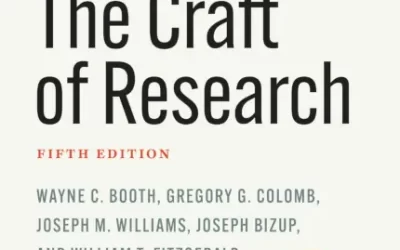For researchers, the road to publication is often a difficult one — and it just got even trickier. With the advent of open-access (OA) journals in which authors often pay a fee to be published, the scholarly publishing world has been the target of many scams. Fake journals claim to provide authors an easy road to publication, but instead only tarnish reputations, destroy credibility, and serve as repositories of junk science. One man, Dr. Jeffrey Beall, has made it his job to uncover these predatory publishers in his blog, Scholarly Open Access (scholarlyoa.com).
This year, while attending the 2015 International Society of Managing and Technical Editor’s (ISMTE) Conference in Baltimore, I heard Dr. Beall give an update of his work. While I was aware of scholarly scams, I had no idea the extent of the damage they can inflict. To understand how predatory publishers work, Dr. Beall first talked about the current scholarly publishing models in use — the traditional, platinum OA, delayed OA, and gold OA models. The traditional model is synonymous with the subscription model, which, for example, is still used by academic libraries. Within open access, there are a few different systems in place. Often funded by not-for-profit or sponsoring organizations, platinum OA is free to the author and the reader. Delayed OA are those publications that use the subscription model but then go open access after some predetermined time period. Finally, gold OA is free to the reader, while the author pays a fee.
What predatory publishers do is exploit the gold OA model for their own profit, while exploiting the researcher’s need to publish. Claiming to be legitimate, these predatory publishers refer to themselves as “Institutes,” “Associations,” or “Centers,” when in reality they are often shady, one-man operations. Authors are spammed with submission invitations and lured in by the promise of quick and easy publication for a fee (though it may be an obscene amount). These journals copy the websites and best practices of esteemed journals and display markers of so-called “quality,” such as offering peer review, providing an International Standard Serial Number (ISSN), or giving a bogus impact factor. In reality, the peer reviews performed are fake or of low quality. In his presentation, Dr. Beall used an example of a predatory journal that offered an expedited peer-review turnaround in as little as one to seven days. For anyone involved in publishing, this is an obvious impossibility. Furthermore, ISSNs can be obtained by anyone and do not constitute a guarantee of quality. The impact factors displayed by these journals often have an incorrect number of digits. There are many other red flags that can identify a journal as fake.
On the one hand, it seems that identifying predatory publishers should be easy. However, for non-native English speaking authors or for those unfamiliar with scholarly publishing, the tricks of predatory publishers work. For authors who unknowingly publish in predatory journals, their reputations and that of their institutions are at risk. Some researchers are even on the editorial board of predatory journals, sometimes without their knowledge. There are also professors who earn tenure as a result of publishing in predatory journals. Any association with predatory journals can seriously harm a researcher’s career.
Unfortunately, the damage caused by predatory publishers does not stop at reputation. Science itself is being affected. With predatory publishing, articles that would be rejected from respected journals are being published and posted online. The very cumulative nature of research is called into question. Researchers are no longer able to trust published articles, as some of them could be bogus. Junk science, dressed up as real science, is increasingly being published to the extent that academic databases are filling up with it. As Dr. Beall put it, the demarcation between science and pseudoscience is disappearing. The result is that fake research now pollutes societal institutions that depend on authentic research.
Dr. Beall also pointed to the fact that as predatory publishers and journals have grown and continue to grow, the scams do as well. Predatory journals now sponsor fake scholarly conferences. Some organizations exist to supply fake impact factors. There are even hijacked journals in which fake counterpart websites for reputed journals are created, which then spam for articles.
In light of predatory publishing scams that have come with open access, Dr. Beall raised the question of whether the traditional model of publishing still has something to offer. He posited that the traditional model has limited space so only the best articles can be published. The publisher also adds value to the scholarship. Additionally, the great thing about the traditional model is that it spreads out the costs of scholarly publishing rather than focusing it on a few authors. Today, some authors are prevented from being able to publish their work, especially unaffiliated researchers and those in developing countries. Dr. Beall shared a couple of editorials written by members of the American Anthropological Association (AAA) in which they voiced their concern about open access, citing that at least half of these journals follow the author-pays model.
The big takeaway here is that open access may not be the unstoppable force we perceive it to be. As Dr. Beall pointed out, most information about scholarly OA publishing comes from OA advocates. The author-pays model is not only difficult for authors, threatening to silence those who can’t afford the fees, but it has also led to the creation of predatory publishers and journals. These scholarly publishing scams not only ruin reputations but they also work to erode science and its application across communities. In today’s world of convenience, researchers— like the rest of us—expect things to be done quickly. However, as we’ve seen with scholarly publishing, there’s no substitute for quality, peer-reviewed work that has been processed by managing and technical editors.
Dr. Beall’s blog is available at scholarlyoa.com. His original presentation, “Scholarly Communication Free-for-All: An Update on the Current State of Predatory Publishing and Related Scams,” was given as a keynote address at the International Society of Managing and Technical Editor (ISMTE) 2015 Conference in Baltimore.




